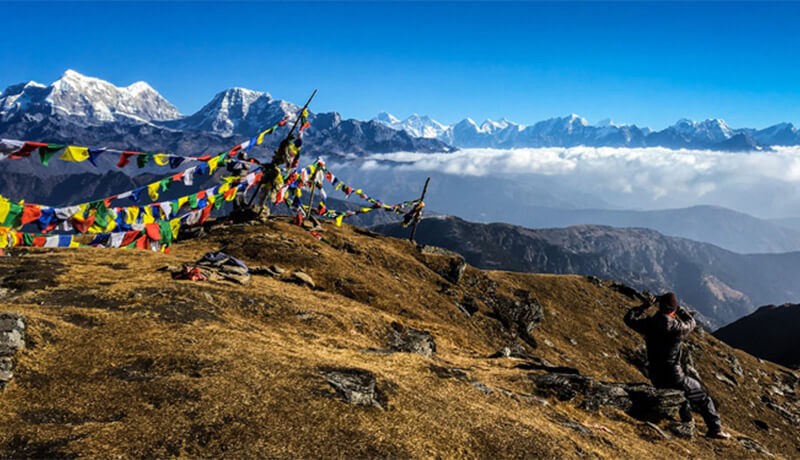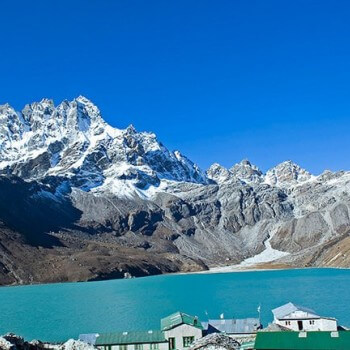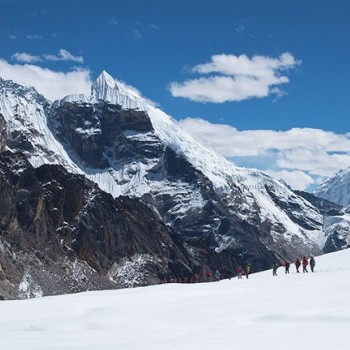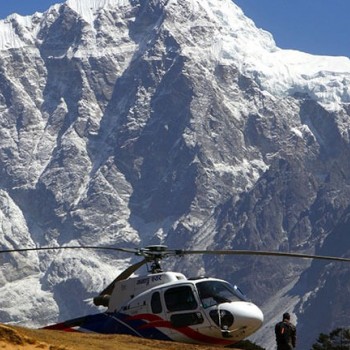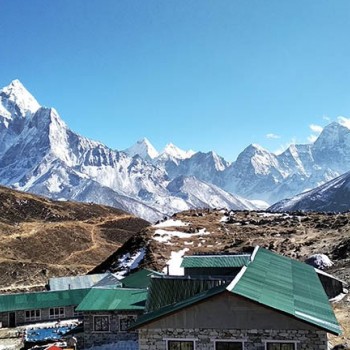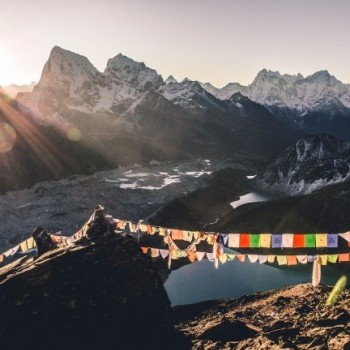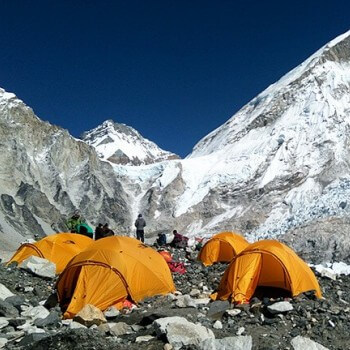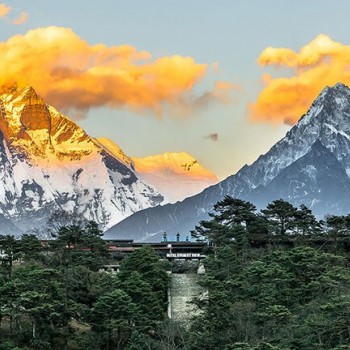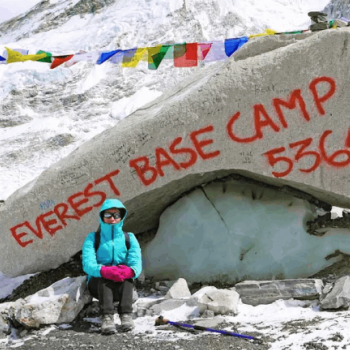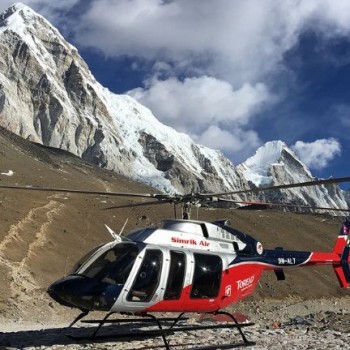Description
The Pikey Peak Trek, located in the Solu-Khumbu region of Nepal, offers trekkers a unique blend of natural beauty, cultural richness, and panoramic mountain views. This trek is named after the sacred Pikey Peak (4,065 meters), which holds significant cultural and spiritual importance for the local Sherpa community. The Pikey Peak Trek provides an alternative to the more crowded Everest Base Camp route, promising serenity and unspoiled landscapes.
The Pikey Peak Trek typically spans 5-7 days, depending on the chosen itinerary and starting point. A common route begins at Phaplu, passing through villages like Chyangba, Jhapre, and Junbesi before reaching Pikey Peak. Each day's trek offers diverse landscapes, from terraced fields to alpine forests, culminating in the majestic views from the peak.
The region is rich in biodiversity, with opportunities to spot various species of birds, including the vibrant Danphe (Himalayan Monal), Nepal's national bird. The forests are home to Himalayan flora such as rhododendrons, magnolias, and pine trees. Nature enthusiasts can explore these diverse ecosystems and enjoy the tranquility of the natural surroundings.
Why Choose Pikey Peak Trek?
Choosing the Pikey Peak Trek means opting for a less commercialized path with equally stunning vistas of the Himalayan range, including views of Mount Everest, Makalu, Kanchenjunga, and Annapurna. It is ideal for trekkers seeking a quieter, more intimate experience with nature and local culture. The trek is also relatively shorter and less demanding, making it accessible to a wider range of trekking enthusiasts.
Historical Background of the Region
The Solu-Khumbu region, home to the legendary Sherpas, has a rich history intertwined with mountaineering and Buddhism. The area became globally known after Sir Edmund Hillary and Tenzing Norgay's successful ascent of Mount Everest in 1953. The Pikey Peak region, in particular, has been a spiritual site for the Sherpas, with its name derived from the local deity, Pikey, representing the sky and the weather.
Geographical Information
Location and Accessibility
Pikey Peak is situated in the lower Everest region, specifically in the Solu-Khumbu district. The trek usually starts from either Jiri or Phaplu. The most common route begins with a flight from Kathmandu to Phaplu, followed by a trek through various Sherpa villages, forests, and ridges leading to the summit of Pikey Peak.
Climate and Best Times to Visit
The best time to start on the Pikey Peak Trek is during the pre-monsoon (March to May) and post-monsoon (September to November) seasons. During these periods, the weather is generally stable, and the skies are clear, offering unobstructed views of the mountains. The climate ranges from mild to cold, depending on the altitude and time of year, with temperatures varying significantly between day and night.
Also Read: Nepal Trekking Temperature Month by Month
Cultural Insights
Local Customs and Traditions
The Sherpa community, predominant in the Solu-Khumbu region, is known for its warm hospitality and rich cultural heritage. Trekkers will experience traditional Sherpa customs, including their unique attire, architecture, and age-old practices. It is customary to greet with "Tashi Delek" and show respect to the local deities and cultural symbols, such as mani walls and chortens (Buddhist shrines).
Festivals and Events
Several festivals enliven the Pikey Peak region, with Mani Rimdu and Lhosar being the most prominent. Mani Rimdu, celebrated in November, is a significant Buddhist festival featuring masked dances and rituals performed by monks at monasteries like Thupten Chholing. Lhosar, the Sherpa New Year, is marked by vibrant celebrations, traditional dances, and communal feasts, providing trekkers with an immersive cultural experience.
Must-Visit Attractions
Pikey Peak Summit
The highlight of the trek is reaching the summit of Pikey Peak, where trekkers are rewarded with a 360-degree panorama of the Himalayas. The sunrise and sunset views from the peak are particularly breathtaking, with the golden hues illuminating the towering snow-capped peaks.
Junbesi Village
Junbesi, one of the most charming villages on the trek, is known for its ancient monasteries and picturesque landscapes. Trekkers can visit the 17th-century Thubten Chholing Monastery and interact with the local monks, gaining insights into the spiritual life of the Sherpa people.
Thupten Chholing Monastery
This monastery, founded by Trulshik Rinpoche in the 1960s, is an important center of learning and meditation. It houses several hundred monks and nuns and offers a peaceful retreat for those interested in Buddhist practices. The architecture and serene environment make it a must-visit on the trek.
Other Side Trips
Other notable attractions include the breathtaking landscapes of Taktor, the lush rhododendron forests of Lamjura La, and the serene Beni village. Each location offers unique experiences and insights into the region's natural and cultural beauty.
Food & Accommodation
Accommodation along the Pikey Peak Trek ranges from basic teahouses to more comfortable lodges. Most teahouses offer essential amenities like meals, hot showers, and cozy beds. It is advisable to carry a warm sleeping bag, as temperatures can drop significantly at night, especially at higher altitudes. Teahouses and lodges along the trek serve a variety of meals, ranging from traditional Nepali food to international dishes like pasta and pancakes. Junbesi and other larger villages have well-known eateries where trekkers can enjoy hearty meals after a long day of trekking.
Transportation Options
The trek can be accessed via a flight from Kathmandu to Phaplu, followed by a trek to Pikey Peak. Alternatively, travelers can take a road trip to Jiri and start the trek from there. Local transportation options include jeeps and buses, which connect major villages along the route.
Packing List
Essential items for the trek include trekking boots, warm clothing (layers), a rain jacket, a hat, gloves, sunglasses, sunscreen, a first aid kit, and trekking poles. A good quality backpack and a hydration system are also crucial. Trekkers should pack light but ensure they have all necessary gear to handle varying weather conditions.
The Pikey Peak Trek is a rewarding journey that combines stunning natural beauty with rich cultural experiences. It is an excellent choice for those seeking an off-the-beaten-path adventure with manageable physical challenges.

